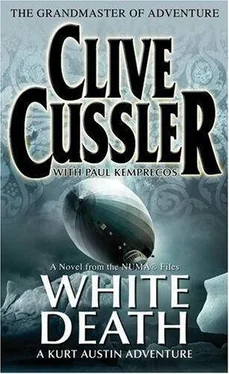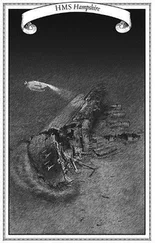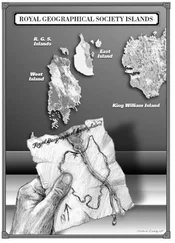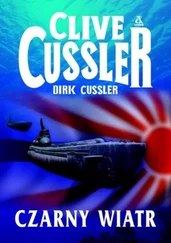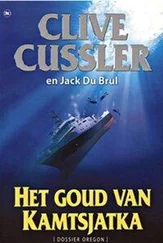Once inside the fuselage, Austin and Zavala found themselves in a small room, after their perilous climb from the nacelle. Hanging on the wall were machinists' tools and spare parts and long black leather coats like those favored by aviators of a bygone era. The room was unheated, and the coats would come in handy for those who worked there. Austin tried a coat on and found that it fit.
"You look like the Red Baron," Zavala said.
Austin slipped a leather cap down on his head. "I prefer to think of myself as a master of disguise." Seeing the skepticism in his part- ner's face, Austin said: "Maybe you've noticed that we're somewhat different in appearance from the Eskimo gentlemen we've seen on this little adventure. If these ridiculous outfits give us a second's edge, they might be worth it."
"The sacrifices I make for NUMA," Zavala said, searching for a coat that fit him.
The room's single door opened onto a long corridor. The walls of the plushly carpeted passageway were decorated with fanciful scenes of men in top hats flying a variety of odd-shaped hot-air balloons and flying machines. Antique crystal lamps hung from the ceiling. At the end of the corridor was a passenger area of comfortably appointed staterooms, each with two berths and its own unique pattern of flow- ery wallpaper.
A short walk led to an elegant dining salon. There were about a dozen small rectangular tables, each covered with a white tablecloth, neatly creased napkins set in place. Two upholstered chairs with ma- hogany arms and legs were pulled slightly back from each table, as if guests were to arrive momentarily.
Tall curtained windows would have given the diners a God's-eye view of the world below. Next to the dining room was a lounge, complete with bar and bandstand, and a dance floor of highly pol- ished wood. Like the dining salon, the lounge was decorated in Art Deco motif. Geometric patterns prevailed. The wall behind the bar was an art gallery ofzeppelin photos.
The lounge was hushed except for the muted rumble of engines.
Zavala looked around in wonder. "This is like being on an old ocean liner."
"Just pray that it isn't the Titanic," Austin said.
Austin led the way toward a room furnished with leather sofas and chairs. His knowledge of German was limited, but he guessed that the sign on the wall designated the area as the smoking room. They left the room and followed another corridor that led to an expansive space that seemed to be a work area. They could see a large functional table illuminated by halogen lamps, computers and several chairs that were designed more for function than comfort. Part of the room was in shadow. Austin found a wall light switch and flicked it on. The entire room was flooded with light, and both men tensed when they discovered that they were not alone. Two figures stood against the far wall, and Zavala swore in Spanish. Out of the corner of his eye, Austin saw the shotgun coming to bear.
"Wait!" he said.
Zavala lowered the gun and smiled as he studied the figures. He was looking at the mummified bodies of two men, propped up on metal stands. They stood in a natural position, arms hanging down by their sides. Their skin was as dark as leather and stretched tightly against their skulls. The eye sockets were empty, but the faces were remarkably well preserved. Austin and Zavala moved in for a closer look.
Zavala said, "I don't think these guys are the Blues Brothers."
"I don't think they're brothers at all. Judging from their clothing, I'd say they come from different eras."
One man was dressed in a heavy shirt and leggings of coarse ma- terial. His dark hair hung down to his shoulders. The taller man had short blond hair and wore a pro-World War II leather coat, not unlike the ones Austin and Zavala were wearing. Hanging above the mummies was a large, ragged-edged piece of aluminum. The word Nietzsche was printed on it.
Next to the mummies was a glass display case like those found in museums. Inside the case were a Leica 35mm still camera and sev- eral lenses, a Zeiss movie camera, charts of the northern hemisphere and a leather-bound book. Austin opened the case and leafed through the pages of the book. It was filled with entries in German, stopping in 1935. He stuffed the book into his pocket. He was examining a dis- play of Eskimo harpoons and knives, when Zavala called him over.
"Kurt. You've got to see this."
Zavala had wandered over to the long ebony chest that rested on a waist-high platform. On top of the chest was a horn that looked as if it had been made from an elephant's tusk. The instrument was studded with gems and banded in gold. Austin carefully removed the horn and handed it to Zavala, who marveled at the detail of the bat- tle scenes carved into the ivory.
Austin opened the chest and pushed back the lid. Lying on pur- ple velvet inside the chest was a sword in its scabbard. He lifted the leather scabbard from the chest and inspected the gold-clad hilt and hand guard. Set into the heavy triangular pommel was a huge ruby. The elaborate hand guard was etched with flowers. He mused at the incongruity of the beautiful decoration on a weapon with such deadly potential.
He hefted the two-edged sword, feeling the perfect balance, then gingerly drew the weapon from the scabbard. An electric thrill seemed to run through his arm. Could this be Durendal, the fabled weapon that Roland swung against the Saracens? The blade was chipped here and there. A picture flitted through his mind of Roland banging the sword against a stone so that it wouldn't fall into the hands of the enemy.
Zavala whistled. "That thing must be worth a fortune." Austin thought about all the time and money Balthazar Aguirrez had expended in his search for the object in his hand. "It's worth a lot more than that," he said.
He removed his coat and buckled the scabbard around his waist. He took a few steps as an experiment and found that the scabbard slapped against his leg. The thick leather belt hindered access to his revolver holster as well. He tried another position, slipping the scab- bard belt over his shoulder so that the sword hung down by his left side. Then he got back into his coat.
"Planning to do some fencing?" Zavala said. "Maybe. You must admit it beats your army knife." "My knife has a corkscrew," Zavala reminded him. "What about the overgrown bugle?"
"We'd better put it back. I don't want to advertise the fact that I've absconded with the toothpick under my coat."
They carefully replaced the horn the way it was found and moved to the other side of the room, where a map of the world was spread out on the worktable. Austin bent over the map and saw that coastal areas on all the continents were blocked out in red pen. Noted next to each red section was a date and a listing of various species offish. A large star marked the lake site where they had boarded the airship. He drew his finger from the star along a pencil line due east into the North Atlantic. The notation above the line was that day's date.
He straightened and said, "We've got to stop this ship before it gets to the Atlantic. This isn't a test run."
"Fine with me. I might point out that this thing is almost a thou- sand feet long and full of heavily armed thugs who might have other ideas."
"We don't have to take over the whole ship, just the control cabin.'
"Why didn't you say so? It's as good as done."
"Think you can fly this old gasbag?"
"Can't be that hard," Zavala said. "You hit the throttle and point the nose where you want to go."
Despite the casual reply, Austin never doubted Zavala's words. His partner had hundreds of hours under his belt flying practically every aircraft built. Austin tried to picture where they were in the zeppelin. He guessed that they were about midway along the length of the great airship. If they kept moving forward and down, they would come to the control cabin.
Читать дальше
